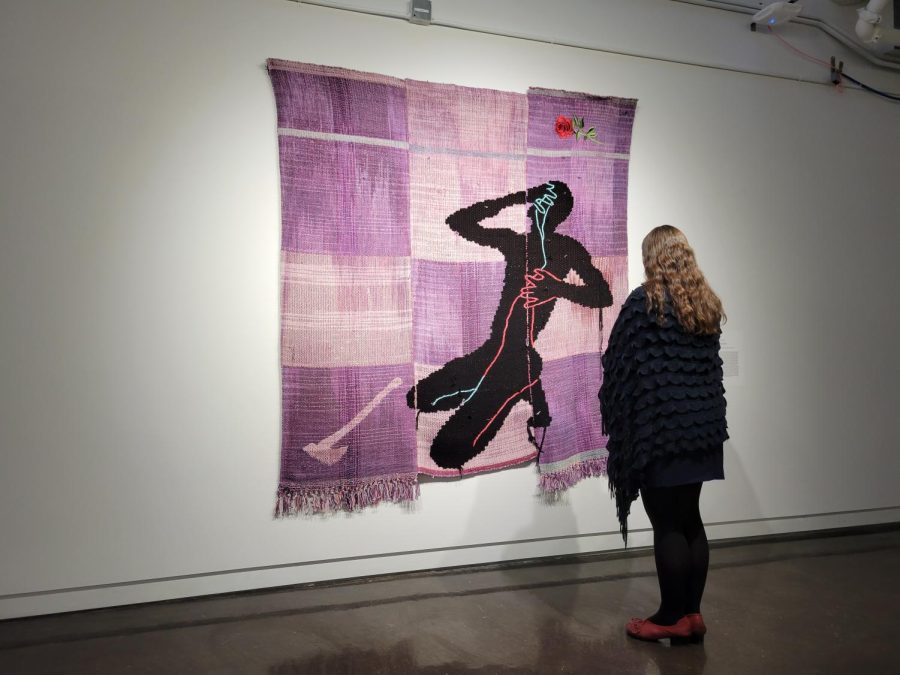New Kent State gallery focuses on textiles as an art form
Helena Richardson, a graduate student at Kent State, stands in front of one of the tapestries featured at the Line by Line exhibit.
January 29, 2022
Weaving is an art technique that is centuries old, but the new art gallery, Line by Line on display at the Center for Visual Arts at Kent State, displays weaving being modernized in innovative ways.
The free display is open to the public Tuesday through Thursday from 10 a.m. to 4 p.m. through March 11. The gallery has brought in art from different weavers each with unique styles and design.
“You have things that represent a painting, but they’re actually textiles,” said Marie Bukowski, the associate dean of the College of the Arts. “You have pieces that are installations that really take up the space in a completely different way than we conceive textiles.”
The exhibition was the idea of Janice Lessman-Moss, a professor of textile arts and head of the textile art program at Kent State. Lessman-Moss has worked at the university for 40 years and wanted to make this exhibit happen before her retirement, she said.
“It’s really critical to keep spaces like this open for a university so that the students can see what they want to aspire to and can network and interconnect,” said Chester Wilson, associate professor from Louisiana Tech University. “It helps the local economy too by bringing vibrancy and companies want to move here.”
Weaving is a very long and difficult process and that’s why Lessman-Moss thinks there is not much weaving and tapestry work in modern art.
“There’s not a big field of textile artists,” Lessman-Moss said. “There are a lot of people who make functional fabrics, but not with the same kind of dedication towards making art.”
Lessman-Moss reached out to artists across the country after having this idea of the exhibit for a long time. These artists included Erin M. Riley, Samantha Bittman, Crystal Gregory, Diedrick Brackens, Kira Dominguez Hultgren and Barrow Parke.
One set of works, titled “Woven” by Gregory is made using concrete slabs and woven fabric. The slabs are connected with bright red, yellow and green pieces of woven cloth. The pieces of cloth differ in lengths, creating two different illusions. One piece is long enough that it sags in the middle and the other piece looks like it is being ripped between the two slabs.
Some of the works reflect life in the 21st century. One series of work by Riley recreates images found online or from her personal photos to tell the story of addiction, social media and life on the internet. Other pieces like Dominguez Hultgren’s deal with inequality and immigration issues.
“It’s not something I’ve really seen before,” said Jiana Schemm, a senior studio arts major, while walking through the exhibit. “I’ve seen textiles, but not in this way.”
Benjamin Weaver is a reporter. Contact him at [email protected].












